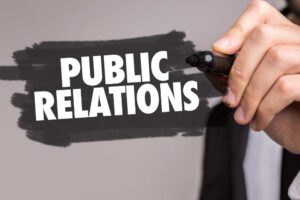Every day, journalists’ inboxes are flooded with press releases that never see the light of day. The harsh reality is that most press releases don’t get opened, let alone published. Why? Because they fail to grab attention, lack newsworthiness, or are simply too generic.
Why Press Releases Fail
It’s important to understand why press releases may just be discounted as a story.
They’re Too Promotional
Journalists are looking for news, not advertisements. A press release that reads like a sales pitch is an instant turnoff. Instead, your release should tell a compelling story that provides value to the reader.
Lack of a Newsworthy Angle
If your announcement doesn’t offer anything timely, relevant, or unique, it’s unlikely to capture a journalist’s interest. The best press releases tie into current events, industry trends, or exclusive data.
Weak or Dull Headlines
The headline is the first (and sometimes only) thing a journalist reads. If it doesn’t immediately grab attention, the rest of your press release won’t even get a glance.
Too Much Fluff, Not Enough Substance
A press release filled with jargon, buzzwords, or excessive adjectives dilutes the message. Journalists prefer straight-to-the-point, fact-based writing.
Lack of a Clear Call to Action
If your press release doesn’t specify what you want the journalist or reader to do next—whether it’s contacting you for more information, attending an event, or downloading a report—it’s missing a crucial element.
How to Write a Press Release That Gets Published
Start with a Strong Headline
Your headline should be clear, concise, and compelling. Aim to answer the journalist’s main question: Why should I care?
Write a Captivating Lead Paragraph
The first paragraph should summarize the most important details of your announcement—who, what, when, where, why, and how. Journalists don’t have time to dig for information, so make it easy for them.
Include a Compelling Quote
Quotes add credibility and a human touch to your press release. Instead of generic corporate statements, use quotes that offer insight, emotion, or expertise.
Provide Valuable Data or Context
Journalists love statistics and hard facts. If you have any relevant data, include it to strengthen your story.
Keep It Short and Scannable
Your press release should ideally be one page (400–500 words). Use short paragraphs, bullet points, and subheadings to improve readability.
Add a Clear CTA and Contact Information
Tell journalists exactly what to do next. Should they contact you for an interview? Download additional resources? Attend an event?
Format Professionally and Proofread
- A poorly formatted, typo-ridden press release will instantly lose credibility. Use:
- A standard press release format (Date, City, Dateline)
- A professional tone
- Spellcheck and grammar tools before sending
Check Out: My Brand Launched, But No One Knows We Exist—How PR Can Fix This
Best PR Practices for Press Release Distribution
Writing a great press release is only half the battle. The next step is ensuring it reaches the right people.
Target the Right Journalists
Don’t blast your release to a generic media list. Research journalists who cover your industry and tailor your pitch to their interests.
Personalise Your Pitch
Instead of sending a mass email, personalize your outreach. Mention the journalist’s previous work and explain why your story is relevant to them.
Send at the Right Time
Timing matters. Send your press release in the morning on a weekday (Tuesday to Thursday is best). Avoid sending on weekends or late Fridays when journalists are less likely to be checking their inboxes.
Follow Up, But Don’t Spam
If you haven’t received a response, a polite follow-up email after a few days is fine. However, bombarding journalists with repeated emails will only get you blacklisted.
Make It Easy to Share
Attach high-quality images, video links, or infographics to make your press release more engaging and shareable.
The Role of Relationships in PR Success
Successful PR isn’t just about sending press releases—it’s about building relationships. Journalists are more likely to cover stories from sources they trust. Here’s how you can foster long-term connections with the media:
- Engage with their work: Comment on their articles, share their stories on social media, and engage authentically.
- Be a resource, not just a sender: Offer insights, expert opinions, and timely information—even when you’re not pitching.
- Respect their time: Send only relevant pitches, follow deadlines, and be available for follow-ups when needed.
Measuring Press Release Success
It’s crucial to track the impact of your press releases. Here are some key performance indicators (KPIs) to monitor:
- Open Rates: Are journalists opening your emails? Use email tracking tools to measure effectiveness.
- Publication Rate: How many media outlets picked up your story?
- Referral Traffic: Did the press release drive visitors to your website?
- Social Shares: How much engagement did it generate across platforms?
By analyzing these metrics, you can refine your approach and improve future press releases.
Also Read – Media Relations Skills and PR Strategies: Effective Brand Communication and Representation
Make Every Press Release Count
A great press release isn’t about self-promotion—it’s about storytelling. By focusing on newsworthiness, crafting compelling headlines, providing valuable data, and targeting the right journalists, you can significantly increase your chances of getting published.
So, the next time you’re about to hit send on a press release, ask yourself: Would I read this if I were a journalist? If the answer is no, go back and refine it.
Master these press release tips, and your brand’s announcements will stop being ignored—and start making headlines.







